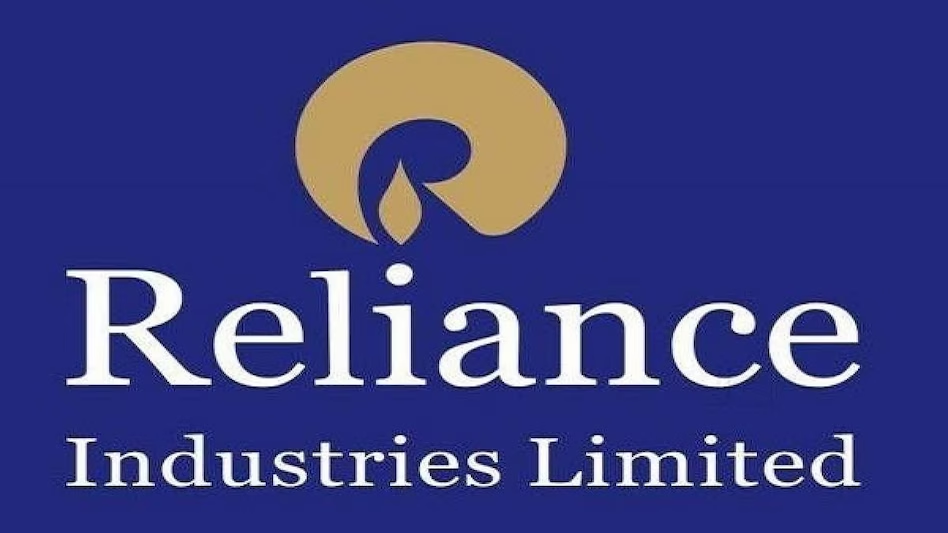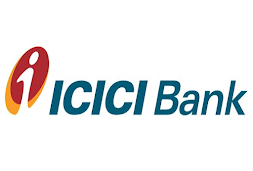NIFTY 50: A Guide for Investors
The NIFTY 50 is a stock market index that tracks the performance of the top 50 companies listed on the National Stock Exchange (NSE). The index was launched on April 22, 1996, and it is now one of the most widely followed indices in India. The NIFTY 50 is a free-float market capitalization-weighted index, which means that the weight of each stock in the index is determined by the market capitalization and the number of shares that are freely available for trading. This ensures that the index is a good representation of the overall performance of the Indian Stock Market.
The NIFTY 50 has been on a bull run in recent years, and it has reached record highs on several occasions. The index has benefitted from strong economic growth in India, as well as from the increasing popularity of equity investing among Indian Investors. If you are considering investing in the NIFTY 50, there are a few things you should keep in mind. First, the index is a volatile investment, and it can experience sharp swings in price. Second, the index is not a good investment for all investors. If you are risk-averse, you may want to consider investing in other assets, such as bonds and gold. However, if you are willing to take on some risk, the NIFTY 50 can be a good way to invest in the Indian Stock Market. The index has a long history of growth, and it is likely to continue to grow in the future.
1. Potential Growth-
- Market size: The size of the market you are targeting is a major factor in your growth potential. A larger market means more potential customers, which means more opportunities for growth.
- Industry growth rate: The growth rate of the industry you are in is another important factor to consider. An industry that is growing rapidly will provide more opportunities for growth than an industry that is stagnant or declining.
- Your company's competitive position: Your company's competitive position is also a key factor in your growth potential. If you have a strong competitive position, you will be better able to compete for market share and grow your business.
- Your company's financial resources: Your company's financial resources will also impact your growth potential. If you have the financial resources to invest in new products, marketing, and sales, you will be better able to grow your business.
- Your company's management team: The quality of your company's management team is also important to your growth potential. A strong management team will be able to develop and execute a successful growth strategy.
- Set ambitious goals: Don't be afraid to set ambitious goals for your business. Achieving these goals will require hard work and dedication, but it will also help you to achieve your full potential.
- Be willing to take risks: If you want to grow your business, you need to be willing to take risks. This may mean investing in new products or markets, or it may mean expanding your workforce.
- Be flexible and adaptable: The business world is constantly changing, so it is important to be flexible and adaptable. This will allow you to quickly adapt to changes in the market and take advantage of new opportunities.
- Be persistent: Don't give up on your dreams. If you are persistent and work hard, you will eventually achieve your goals.
2. Diversification-
- Asset classes: Diversification can be achieved by investing in different asset classes, such as stocks, bonds, real estate, and cash. Stocks are ownership shares in a company, bonds are loans to a company or government, real estate is land and buildings, and cash is currency. Each asset class has its own unique risks and rewards, so by investing in a variety of asset classes, you can reduce your overall risk.
- Geographic diversification: Diversification can also be achieved by investing in different geographic regions. This helps to reduce your risk because different regions may experience different economic conditions. For example, if you invest only in the United States, your portfolio could be adversely affected by a recession in the US. However, if you also invest in other countries, your portfolio may be less affected by a recession in the US.
- Industry diversification: Diversification can also be achieved by investing in different industries. This helps to reduce your risk because different industries may perform differently during different economic cycles. For example, during a recession, consumer discretionary industries (such as retail and entertainment) may underperform industries that are considered essential (such as utilities and healthcare).
- Start by understanding your risk tolerance: Your risk tolerance is the amount of risk you are willing to take with your investments. If you are risk-averse, you may want to invest in more conservative assets, such as bonds and cash. If you are more aggressive, you may want to invest in more risky assets, such as stocks.
- Consider your investment goals: Your investment goals will also affect your diversification strategy. If you are saving for retirement, you may want to invest in a mix of assets that will provide you with growth and income over time. If you are saving for a short-term goal, such as a down payment on a house, you may want to invest in more conservative assets that will preserve your capital.
- Rebalance your portfolio regularly: As your investments grow, it is important to rebalance your portfolio to ensure that it still meets your investment goals. This involves selling some of your winners and buying more of your losers.
3. Tax Benefits:-
- Long-term capital gains: Long-term capital gains are taxed at a lower rate than short-term capital gains. Short-term capital gains are taxed at your ordinary income tax rate, while long-term capital gains are taxed at a lower rate, currently 15% for most investors. To qualify for the long-term capital gains rate, you must hold the investment for at least one year.
- Dividends: Dividends are payments made by a company to its shareholders. Dividends are typically taxed at a lower rate than ordinary income. The tax rate on dividends depends on your income and filing status. For example, in 2023, the tax rate on dividends for single filers with taxable income of $40,000 or less is 0%.
- Tax-advantaged accounts: There are a number of tax-advantaged accounts that can be used to invest in the share market. These accounts offer tax breaks that can help you save money on your taxes. Some of the most popular tax-advantaged accounts include:
- Individual Retirement Accounts (IRAs): IRAs are tax-deferred accounts that can be used to save for retirement. Contributions to an IRA are tax-deductible, and earnings in an IRA grow tax-deferred.
- 401(k) plans: 401(k) plans are employer-sponsored retirement plans that offer tax advantages similar to IRAs. Contributions to a 401(k) plan are tax-deductible, and earnings in a 401(k) plan grow tax-deferred.
- Health savings accounts (HSAs): HSAs are tax-advantaged account units that can be used to pay for qualified medical expenses. Contributions to an HSA are tax-deductible, and earnings in an HSA grow tax-free.

4. Control Over Your Money:-
- Set financial goals. What do you want to achieve with your money? Do you want to save for a down payment on a house, pay off debt, or retire early? Once you know what you want to achieve, you can start making a plan to get there.
- Create a budget. A budget is a plan for how you will spend your money each month. It can help you track your spending, identify areas where you can cut back, and save for your goals.
- Automate your savings. One of the best ways to save money is to set up automatic transfers from your checking account to your savings account on a regular basis. This way, you won't even miss the money, and you'll be on your way to reaching your savings goals.
- Pay down debt. If you have debt, make a plan to pay it off as quickly as possible. The longer you carry debt, the more interest you will pay.
- Invest for the future. Once you have paid off your debt and have a solid emergency fund, you can start investing for the future. Investing can help you grow your money and reach your long-term financial goals.
- Get help from a financial advisor. If you are struggling to manage your money, a financial advisor can help you create a plan and make sure you are on the right track.
List of the NIFTY 50 Companies in 2023:-
1. Reliance Industries Ltd. (RIL) is a multinational conglomerate headquartered in Mumbai, India. It is the largest company in India by market capitalization and one of the largest companies in the world. RIL operates in a wide range of businesses, including energy, petrochemicals, retail, and telecommunications.
2. Tata Consultancy Services Ltd. (TCS) is an Indian multinational information technology services and consulting company headquartered in Mumbai, India. It is the largest IT services company in India and the second-largest IT services company in the world. TCS provides a wide range of IT services, including consulting, application development, and maintenance, and infrastructure management.
3. HDFC Bank Ltd. is a private-sector bank headquartered in Mumbai, India. It is the largest private sector bank in India by market capitalization and one of the largest banks in the world. HDFC Bank offers a wide range of banking products and services, including savings accounts, loans, and investments. 4. Infosys Ltd. is an Indian multinational information technology services and consulting company headquartered in Bengaluru, India. It is the second-largest IT services company in India and the fifth-largest IT services company in the world. Infosys provides a wide range of IT services, including consulting, application development, maintenance, and infrastructure management.
5. ICICI Bank Ltd. is a private-sector bank headquartered in Mumbai, India. It is the second-largest private sector bank in India by market capitalization and one of the largest banks in the world. ICICI Bank offers a wide range of banking products and services, including savings accounts, loans, and investments.
6. Hindustan Unilever Ltd. (HUL) is a multinational consumer goods company headquartered in Mumbai, India. It is the largest consumer goods company in India and one of the largest consumer goods companies in the world. HUL produces a wide range of consumer goods, including soaps, detergents, shampoos, toothpaste, and food products.9. Tata Steel Ltd. Tata Steel Ltd. is an Indian multinational steel company headquartered in Jamshedpur, India. It is the largest steel company in India and one of the largest steel companies in the world. Tata Steel produces a wide range of steel products, including hot-rolled coils, cold-rolled coils, and galvanized sheets.
There are 50 companies in total in the NIFTY 50. I have named 10 companies as I would explain their market cap value and the reasons for investing or not investing in the companies. It would give you high returns or not in the future aspects.
- Start small. Don't invest more than you can afford to lose.
- Use a discount broker. Discount brokers offer lower trading fees than traditional brokerage firms.
- Use a paper trading account. A paper trading account allows you to practice investing without using real money.
- Read books and articles about investing. There are many resources available to help you learn about investing.
- Join an investment club. An investment club is a group of people who pool their money together to invest.
- Attend investment seminars. Investment seminars can be a good way to learn about different investment strategies.
Investing in the stock market can be a great way to grow your wealth over time. However, it's important to remember that there is always risk involved. Do your research, invest for the long term, and diversify your portfolio to help reduce your risk.

















Comments
Post a Comment